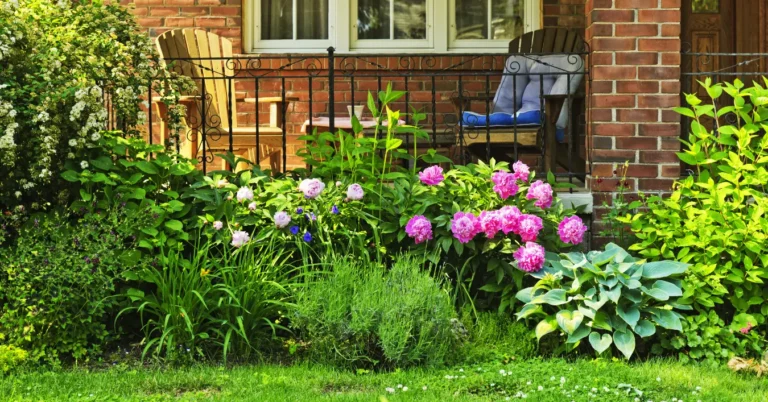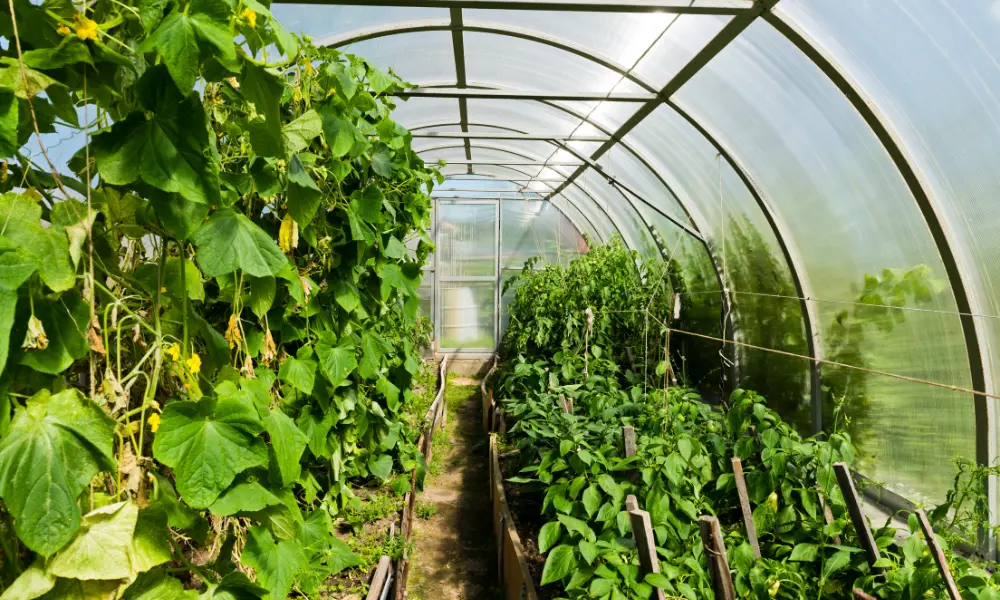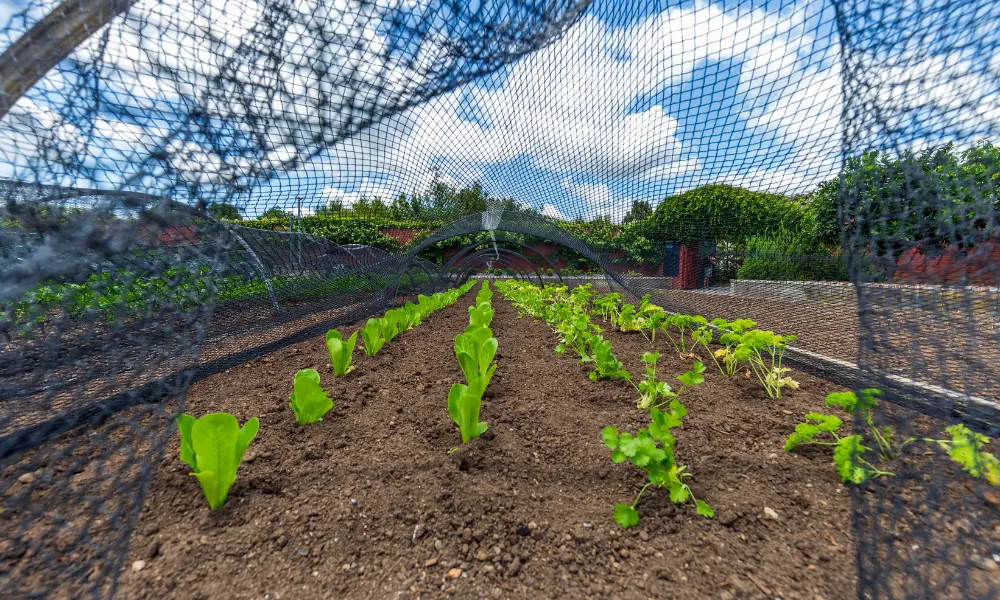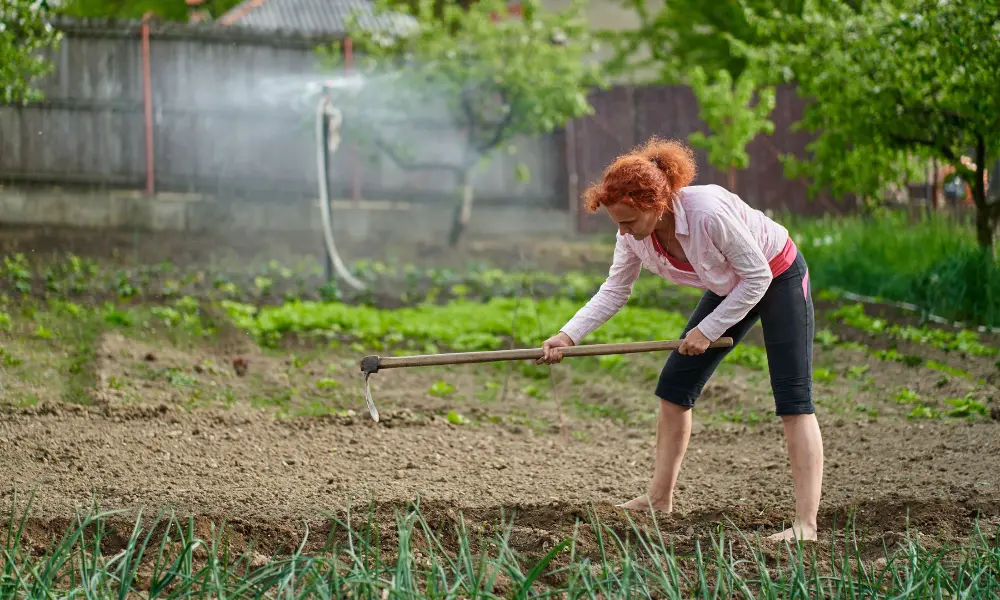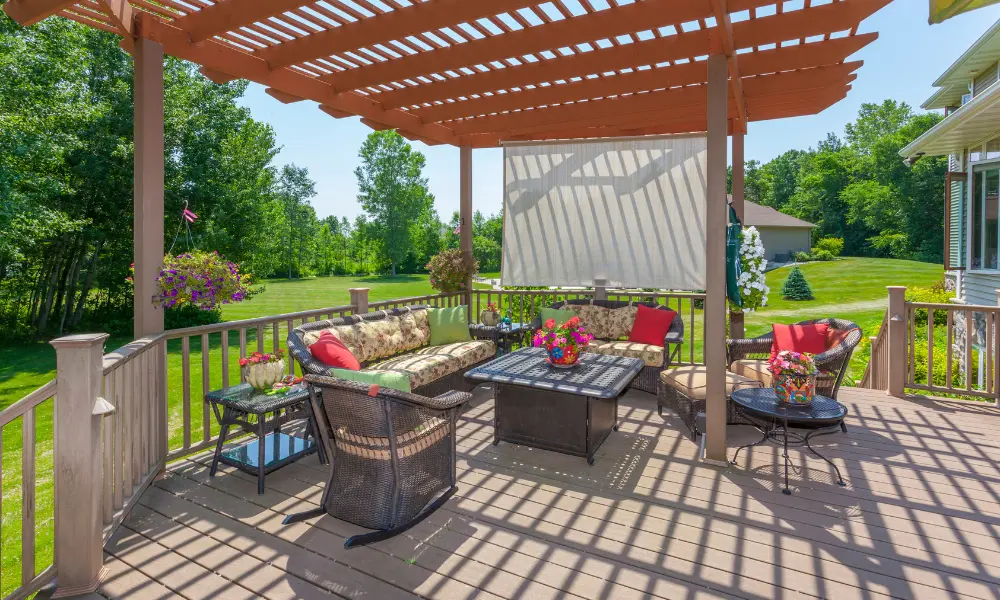The concept of a front yard often revolves around manicured lawns and decorative plants. Growing your own food is both a right and a privilege. It’s something we shouldn’t easily give up. If you’ve ever thought about survival gardening but lacked space or skills, start in your front yard. Prove to yourself that you can grow food in a small space.
Make it visible to the public. People will appreciate a front yard vegetable garden that looks beautiful. Turn your yard into an edible garden with swiss chard, marigolds, and black-eyed Susan flowers. Surprise – there are vegetables in that flower bed!
While beauty is subjective, a well-maintained garden helps blend with the mainstream view of manicured lawns. When you’re ready for the adventure, grab your seed catalogs, make your orders, and plan your front yard vegetable garden.
Why choose the front yard? There are many reasons. Most importantly, it fulfills every gardener’s dream. Gardening saves money, lets you enjoy meaningful outdoor time, and gives a sense of self-reliance.
Growing food brings joy and happiness. Even starting with a back porch container garden may not be enough. Your backyard might be too shady. In such cases, look at your front yard. Check the size, sunny hours, and soil quality. Raised beds work well for challenging soil. Consider these six reasons for your front yard vegetable garden.
In many American front yards, people grow and care for turfgrass. They water it, feed it, and regularly cut and discard it. All this effort for a harvest you can’t eat! What if, instead of mowing, you spent time on crops you could actually enjoy?
Front lawns are not very “natural.” They’re like a rare monoculture in nature but common in neighborhoods. Turning your front yard into a vegetable garden might raise eyebrows, but with the right approach, you’ll impress skeptics.
Make it manageable, neat, and productive. Vegetable gardens may not always look perfect. Pests and blights can affect foliage and fruit. But with effort and experimentation, you’ll have edible rewards – failures, triumphs, and surprises included!
Will it work for you?
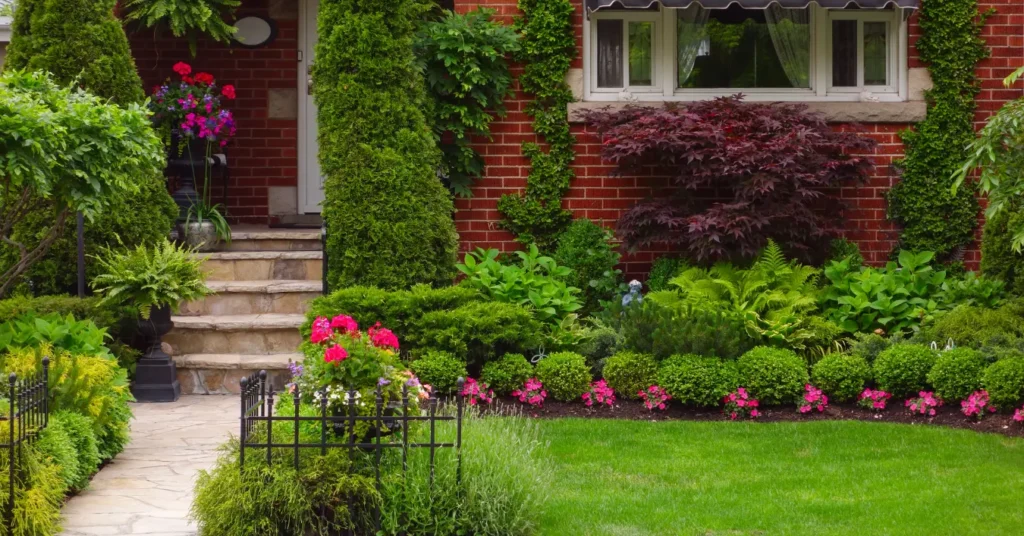
Dream big but be realistic about time. Start with a scalable plan for future expansion. Consider sunlight – most crops need a full day. If less sun, opt for shade-tolerant crops or movable planters to follow the sun.
Water is crucial. Plan for regular watering – a soaker system can help. Raised beds are better than in-ground planting for easy management and soil quality.
Check regulations. Some places restrict non-lawn space in front yards. Ensure your area allows front-yard vegetable gardens.
Making a plan Sketch a plan on graph paper or use an online garden planner. Keep raised beds around 4 feet wide for easy access. Choose naturally rot-resistant lumber for beds. Use the Soil Calculator for the right amount of quality soil. Consider an automatic watering system for convenience.
The Plants Choose compact vegetable varieties. Avoid large vines in small spaces. Explore the Vegetable Encyclopedia and Top Crops for Small Vegetable Gardens for ideas.
In the end, turn your front yard into a fruitful garden – a blend of beauty and functionality. Enjoy the process, learn from mistakes, and savor the satisfaction of growing your own food!
Why You Should Have a Front Yard Vegetable Garden?
Looking to add purpose and beauty to your front yard? Growing crops is a fantastic way to make the most of the space and enhance its appearance.
Raised Beds for Appeal: Create attractive raised beds using materials like woven wicker or upcycled pallets. Keep them well-edged and enrich the soil for a cared-for look. Use a drip hose for efficient watering.
Container Gardening: Grow fruits and veggies in pots or hanging baskets for smaller spaces. Try alpine strawberries or compact peas. Water them regularly and watch out for slugs.
Personalize with Style: Add ornamental details like painted signs or unique containers for vintage flair. Personalize raised beds with exterior paint, or include a water feature like a bird bath.
Relax and Enjoy: Install a bench or chair to relax and enjoy your garden. Consider an arbor with trellised sides for shelter and support for climbing plants. A compact bistro set can provide a cozy spot.
Blooms and Vegetables: Incorporate blooming plants like marigolds and nasturtiums for pollinators and color. Companion plants like sunflowers and fruit trees in pots offer beauty and function.
Fragrant Herbs by the Door: Plant herbs in pots for an aromatic and edible treat. Basil, mint, rosemary, and thyme are excellent choices. Use a pot stand for a variety of herbs near your front door.
Mini Greenhouse Benefits: Even a small greenhouse can protect crops in winter. Plant winter salads, herbs, and strawberry plants for early fruits.
Easy Maintenance with Pathways: Add pathways for easy access to your crops. Use weed-suppressing membrane topped with bark chippings or slices of log for a relaxed feel.
Evergreen Structure with Shrubs: Trimmed shrubs like privet or box provide color and structure during winter. Grow winter vegetables like kale and chard for variety.
Vertical Vegetable Garden: Utilize vertical gardening for compact spaces. Try a living wall, obelisk, or trellis with a planter box for climbing beans, peas, or squash.
Observe sunlight in your front yard. Tall plants like tomatoes along borders, low-growers like greens, carrots, and herbs. Plant what you’ll eat and create a stunning display. Most vegetables and fruits need ample sunlight, but some tolerate shade like gooseberries and raspberries, according to gardening experts.
Front yard gardens often do better as they’re more visible, encouraging owners to tend to them for a rewarding harvest.
Discover the Beauty of Growing Vegetables in Your Front Yard
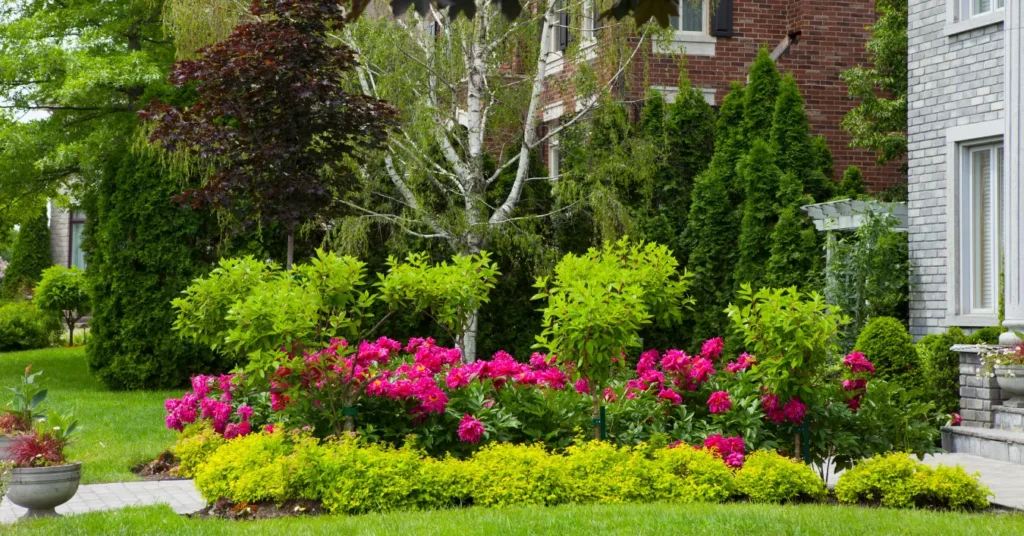
Hey there, curious minds! Today, we’re diving into the world of front yard veggie gardens. Before we tackle the nitty-gritty rules, let’s focus on the good vibes that come with growing your own greens.
Why consider a front yard veggie garden? Well, for starters, it adds a dash of beauty to your surroundings. Imagine a small piece of land transformed into a vibrant haven of flowers and fresh produce.
Picture this: a couple of raised beds can turn your space into a picturesque landscape where veggies and flowers coexist. It’s like having your own salad haven right outside your door, ready for harvest when the season smiles upon you.
Now, let’s talk about the showstoppers – leaf lettuces. Plant them close, mix different varieties, and watch your garden become a dazzling display of colors and textures. And hey, ever heard of nasturtiums? They not only have aromatic flowers but also leaves you can munch on. It’s a double whammy of beauty and taste!
Cultivate Connections with Your Neighbors Through Front Yard Gardening
Your front yard, though not entirely public, is still your own space. When you plant there, expect friendly neighbors to stop by, curious and eager to chat. Consider sharing a few tomatoes or a sprig of rosemary with them – a small gesture that can go a long way in building relationships.
This is your opportunity to connect with neighbors, especially if you haven’t met them yet. For those you already know, gardening together could be a new shared interest. You might even inspire them to start their own front yard garden.
The more people involved, the more acceptable it becomes. It’s like a shared community effort. Let’s bring back the popularity of growing vegetables, encouraging more people to join in. Imagine swapping homegrown veggies instead of the usual cakes and cookies – perhaps a pan of carrot cake made with carrots from your own front yard garden.
In the simple act of cultivating your front yard, you’re cultivating connections and making your neighborhood a friendlier place.
Not Enough Space in Your Backyard? Grow Out in Front
If your backyard is not big or is used for different things like playing sports or hanging out, don’t worry. Some of us have that situation. Also, there might be big trees that make your backyard shady.
But guess what? Your front yard can be useful too! Check if it’s good for using. You can make it nice by adding a small water thing, bird feeders, and pretty flowers. It’s not just for looks; it can also be a small wild area. That’s something good for every neighborhood.
Sometimes, we need to be creative with the space we have. Front yards can be cool too. They are not just for show. Make yours nice and helpful. You and your neighbors will like it.
And remember, you don’t need a big yard to make it look good. Small changes can make a big difference. So, if your backyard is not enough, think about your front yard.
Cultivate Your Own Edible Blooms and Herbs
Exploring the possibilities beyond the typical veggies like tomatoes and peas, turning your front yard into a garden can be a great idea. It’s not just about the usual flowers; you can grow edible blooms too.
Don’t forget about herbs – they’re fantastic for your culinary adventures. Just ensure your garden isn’t too close to a busy road. If it is, consider adding a charming fence or border to protect your delectable crops.
Imagine strolling through your garden, plucking not only beautiful flowers but also herbs that add flavor to your meals. It’s a delightful way to connect with nature and elevate your cooking. Plus, the satisfaction of harvesting your own herbs and flowers is unmatched.
When choosing flowers, opt for varieties like nasturtiums, pansies, or violets. These not only add color to your garden but also make for delightful garnishes or additions to salads. Edible flowers aren’t just pretty; they bring a unique taste to your dishes.
Discover the Goodness in Weeds
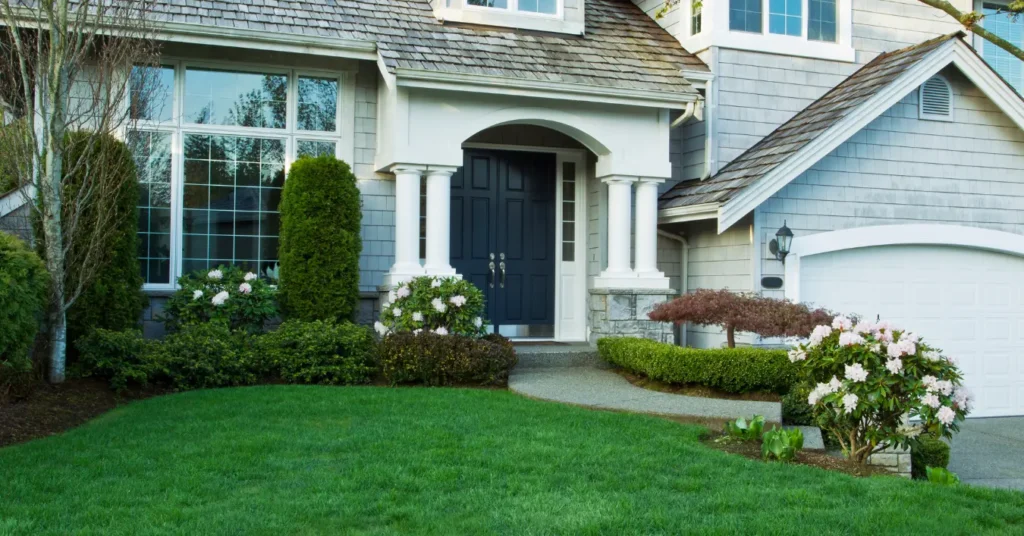
Gardening isn’t just about flowers and veggies – it’s about weeds too!
You might be surprised, but some common weeds are not just green invaders; they’re actually edible. Yep, you heard it right!
Now, some folks might frown upon having a weedy garden. They prefer neat and orderly lawns. But, hold on – these weeds can be a tasty addition to your meals, and they’re loaded with good stuff for your body. Take dandelions, for example – they’re like nature’s multivitamin.
Don’t worry about your garden looking messy. You can tackle those weeds while keeping things tidy. Think of it as a little weeding workout for your garden!
And guess what? If anyone questions your wild gardening ways, just hand them a small jar of your homemade dandelion salve. It’s not just a weed, it’s a wellness secret!
So, next time you’re out in the garden, don’t be too quick to dismiss those weeds. They might just be the unexpected stars of your next meal.
Opt for Edible Gardens Instead of Lawns
Growing food, not lawns, has a compelling rationale. Rather than maintaining a grassy yard, consider the benefits of cultivating edible crops in raised beds.
Green lawns, often monoculture crops, monopolize space that could serve a more practical purpose. They form a uniform carpet, rarely utilized, and contribute to the phenomenon of “short grass envy.”
In this context, the excessive use of fertilizers, the time invested in mowing, and the disposal of grass clippings become relevant. All this energy expenditure merely caters to visual aesthetics, not to the sustenance of your stomach.
Unless your front yard accommodates livestock like sheep, goats, or rabbits, it might be occupying space better suited for growing crops that can enhance your dietary variety.
Alternatively, transforming your front lawn into a meadow can attract a diverse range of wildlife during both day and night. Embracing this approach not only benefits nature but also provides an opportunity to observe and enjoy the vibrant activity in your neighborhood.
Positive Change Creates a Significant Impact
Making a positive impact starts with setting a great example. One impactful way to do this is by maintaining an eye-catching front yard vegetable garden. Keep it well-groomed, prune plants when needed, and promptly remove tall weeds. Ensure everything is watered, thriving, and stands out for all to see.
As your front yard transforms into a productive space, others will notice and may be inspired to follow suit. Patience is key – it takes time for a green blanket to turn into a diverse crop display. Appreciate the beauty, nourish it, and take pride in growing vegetables in your front yard.
Planning Your Front Yard Vegetable Garden
If this is the year you decide to start your front yard garden, plan intelligently. Since it will be on display, aim for an aesthetically pleasing look. Cast aside worries and fears; this garden is for you. Envision lushness and healthy vegetables, then use your growing gardening skills to bring it to life.
Begin by deciding on a layout. Grab colored pencils and paper or use digital garden planners. Sketch what to plant and where, allowing your creativity to flow. Choose the method that works best for you.
Now, consider the most efficient and showy way to grow your vegetables. Your front yard garden is a canvas – paint it with the vibrant colors of a thriving and well-planned vegetable patch. Experiment with layouts until you find what suits your space and preferences.
Front Yard with Raised Bed Vegetable Gardens
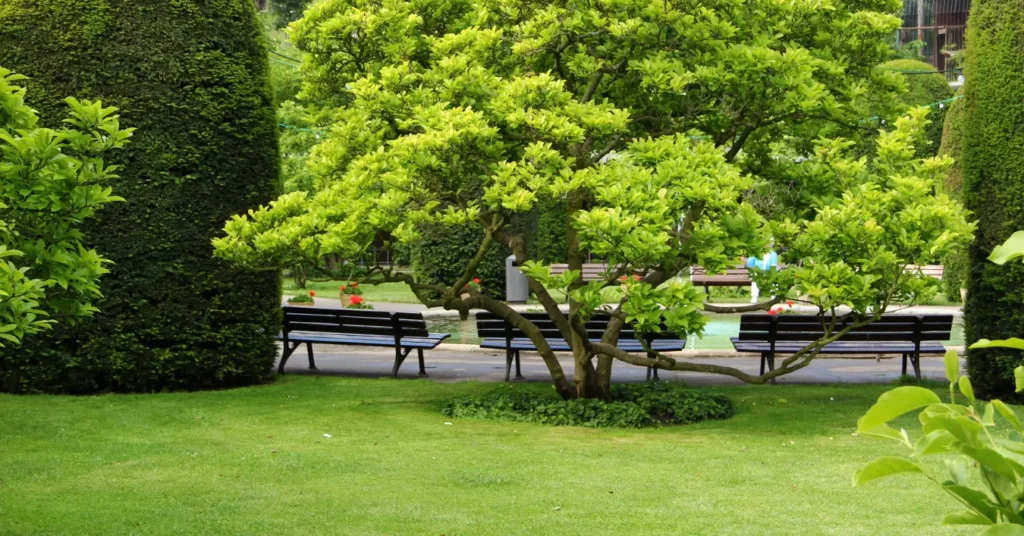
Raised beds offer various benefits for your front yard vegetable garden.
The soil in raised beds warms up quickly in the beginning, providing an early advantage for your plants. These beds retain warmth longer, allowing for an extended growing season, resulting in more harvest. Raised garden beds tend to have fewer weeds, making maintenance easier for you.
With no foot traffic to compact the soil, raised beds promote better drainage, ensuring your plants receive the right amount of water. You have the flexibility to choose and control the quality of the soil in your raised beds, catering to your plants’ specific needs.
If you’re renting or experimenting, raised beds can be built as a temporary solution. After the season, frames can be removed, allowing you to start fresh with new grass seed. Even on slopes, raised beds prevent soil runoff, making them suitable for yards with varying terrain. Choosing the right materials for your raised beds not only enhances functionality but also adds visual appeal to your front yard.
If you’re renting a house or testing the gardening waters in your front yard, raised beds offer an excellent trial solution. At the season’s end, the removable frames simplify transitioning, and you can even sow new grass seed. The adaptability of raised beds makes them a practical and visually pleasing choice, ensuring a fruitful gardening experience in any front yard.
Planting Choices: Directly in the Ground
When it comes to creating a garden in your front yard, there’s another approach worth considering – sowing seeds directly into the ground. This method skips the laborious task of tilling your lawn, making it a simpler and back-friendly process.
A no-dig garden is the key to success here. Instead of relying heavily on a shovel, this method focuses on incorporating mulch, compost, and organic matter into the soil. By doing so, you not only save time but also promote a healthier garden.
The beauty of this approach lies in the benefits of mulch. It not only aids in preventing weeds from sprouting but also contributes to maintaining a neat and organized garden. This added layer of mulch can be a pleasant sight for your neighbors, adding to the overall charm of your front yard.
Choosing to go the no-dig route doesn’t just make gardening more accessible; it enhances the aesthetics of your outdoor space. Imagine a garden that not only flourishes with vibrant plants but also remains free from the nuisance of invasive weeds.
Moreover, the simplicity of this technique encourages a broader audience to try their hand at gardening. Whether you’re a seasoned gardener or someone looking to explore a new hobby, direct planting in the ground opens the door to a hassle-free and enjoyable gardening experience.
What to Plant in Your Front Yard Vegetable Garden
If your front lawn is small and you want a garden, go for smaller plants. Big pumpkins and melons sprawling on the sidewalk might not be ideal.
Most climbing plants might be too much, unless you’re up for using a trellis for your squashes. It not only saves space but looks amazing!
Choosing easy-to-grow fruits and veggies makes gardening simpler and more rewarding.
After the gardening season, tidy up your front yard. Clean and organize, compost what you can, and store things for next year.
In milder climates, you might garden all year. Try cool-weather crops and late-blooming flowers for beautiful fall colors.
Enhancing Your Garden Space
Consider the layout of your garden. Mixing flowers like marigolds and calendula with veggies not only looks good but can help with pest control.
Plant taller items, like sunflowers, toward the back. This avoids shading smaller plants and gives your garden a dynamic look.
Don’t forget to water your garden regularly, especially during dry spells. Mulching can help retain moisture and keep weeds at bay.
Year-Round Gardening Tips
In regions with milder weather, gardening can be a year-round joy. Experiment with planting schedules for continuous harvests.
Cool-weather crops like lettuce and Swiss chard thrive in the fall. Late-blooming flowers add a pop of color when other plants are slowing down.
Helpful Tips for a Successful Front Yard Vegetable Garden
Before you start a big project like a front yard vegetable garden, it’s important to understand what you’re getting into.
Gardens need time, energy, sun, water, and more. But in the end, they give you food. Make sure you have what it takes for a great harvest.
Your garden gives back. Just be sure you have the time and energy it needs.
Finding Enough Time
Gardening takes time. Shopping does too. Consider shopping in your front yard garden. The time spent growing, weeding, and harvesting will be worth it. Start small and grow bigger as you have time.
A soaker hose is good for watering a garden. Raised beds drain faster, so they need more water. Have an irrigation plan for sunny days. Hand watering is good for a small garden. A larger one may need sprinklers or soaker hoses.
Be Ready to Answer Questions
Expect visitors with questions about your front yard garden. Answer honestly to encourage others to grow their own food. More front yard gardens mean more people growing food. We can save seeds and pass knowledge to the next generation.
Use common sense and garden at your own risk. Check your community rules before planting. If it’s not allowed, petition for the right to have a front yard garden. Give good reasons why it’s important.
Grow your garden to support yourself and your family. Impress your neighbors with homegrown, nutritious foods.
